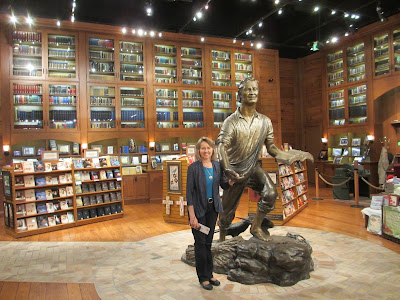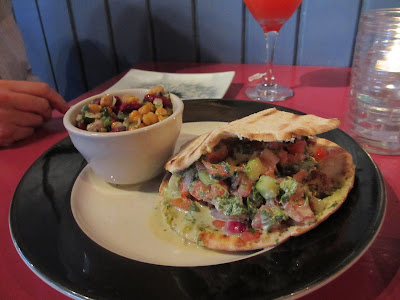When I think of Holland, or the Netherlands, one of the first things that comes to mind is cheese, particularly gouda cheese. When Judy's siblings and their spouses signed up for a river cruise from Basel to Amsterdam, finding a way to experience cheese in Amsterdam became a priority. We found that the no. 12 ranked activity on Trip Advisor in Amsterdam (out of 137) was the Reypenaer Cheese Tasting Rooms. We'd never heard of Reypenaer Cheese, but after a little investigation, we added it to our itinerary.
Reypenaer is a Dutch cheese company that has been making cheese for more than 100 years. The original Reypenaer warehouse is located in Woerden, 25 miles south of Amsterdam and 24 miles southeast of Leiden. The historical way of ripening cheese still takes place in the old warehouse, with natural fluctuations of temperature and humidity the only constant. In modern cheese facilities, the ripening process is artificially regulated and controlled by modern technology, with lower temperatures and higher humidity. A claimed consequence is that the Reypenaer cheeses, made the old way, tend to lose more weight in the ripening process than their competitors' cheeses. Reypenaer also claims that the microflora of bacteria and molds in the wood of the planks, beams and floors, in the old warehouse, accumulated over years of cheese making, adds to the unique tastes of the cheeses.
Reypenaer makes three types of cheese in the old warehouse: (1) Reypenaer, aged for one year; (2) Reypenaer V.S.O.P., aged for two years; and (3) Reypenaer XO Reserve, aged for 2 1/2 years. Cheeses from the new warehouse carry the name Wyngaard. Wyngaaard Affineurs are made of cow milk and Wyngaard Chevre are made of goat milk.
At our cheese tasting class we were paired up with a cutting board, six blocks of different kinds of cheese and a printed grid for taking notes. We wrote down each of the six kinds of cheese, its color, its smell, its taste, its consistency, its age, our overall impression and our grade, on a scale of 1 to 5.
My least favorite of the six cheeses was Wyngaard Chevre Affind, made out of goat milk and aged for four months.
It smelled a little sour, like goat, was mild and slightly sweet tasting, and the consistency was a little rough, not real smooth. I gave it a grade of 3.
Surprising to me after-the-fact, is my grade for Reypenaer, a cow's milk cheese aged for one year.
Reypenaer has been named the Supreme Champion Cheese (of all 260 categories of cheeses) three times, in 2005, 2007 and 2009, at the International Cheese Awards in Nantwich, England, a premier cheese show held each year since 1897. I gave it a grade of 3.25.
What surprises me is that I rated the Wyngaard Affineurs a little higher at 3.5.
It is also a cow's milk cheese aged for five months. Both were yellow and the Reypenaer had a slightly stronger smell. The Reypenaer had a little of a crystally consistency while the Affineurs was buttery smooth. The Reypenaer was stronger tasting, but the Affineurs was sweeter and had a bit of a grassy taste. It was described as a breakfast cheese.
Next, in terms of preference, was the Reypenaer Wungaard Kaas B.V. Reserve Special, which I am assuming is the XO Reserve.
It was aged for two and a half years. The cheese itself was a darker yellow, particularly near the rind, and it had white spots in it.
Its consistency was much denser, it was dryer and crunchy with crystals. It did not smell as strong as the Reypenaer V.S.O.P. cheese, aged for two years, but it did have a stronger after-taste and it was a little sweeter. This particular cheese is only made of summer milk and is their most exclusive cheese. I gave it a 3.75 rating.
I gave two cheeses a rating of 4. My favorite of the Reypenaer cheeses was the V.S.O.P., aged for two years. It was the strongest smelling, and strongest tasting, a little saltier and very crystally.
The other 4, my favorite of all the cheeses, was the Wyngaard Chevre Gris, a goat milk cheese aged for eleven months.
It was more cream color than its less aged goat companion. It also had a stronger goat smell and was sweeter, more complex and woody tasting. It was dryer, grittier and more crystally than its companion.
As with other cheese tastings we've done, it is fun to see how aging and type of milk have such an impact on overall taste and texture.




















































